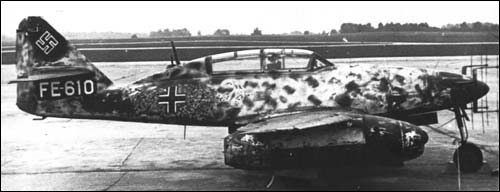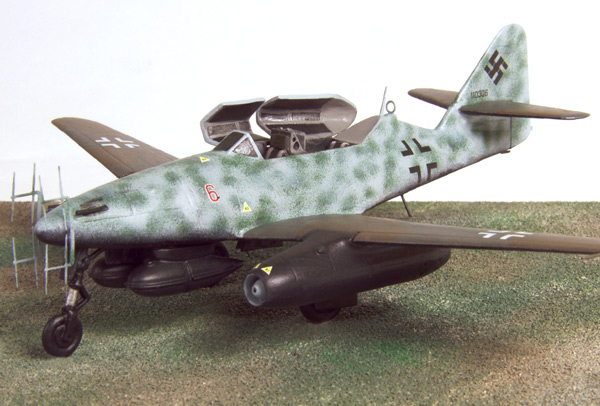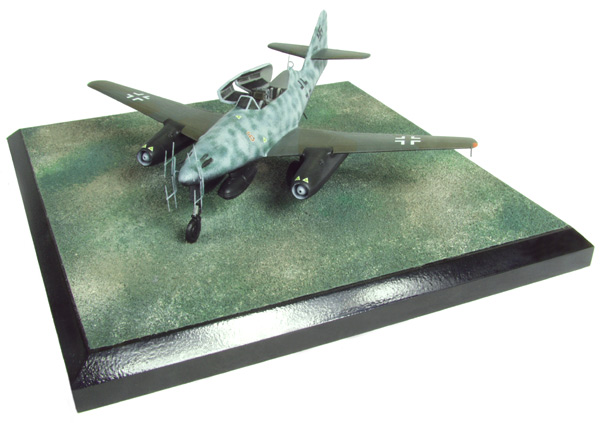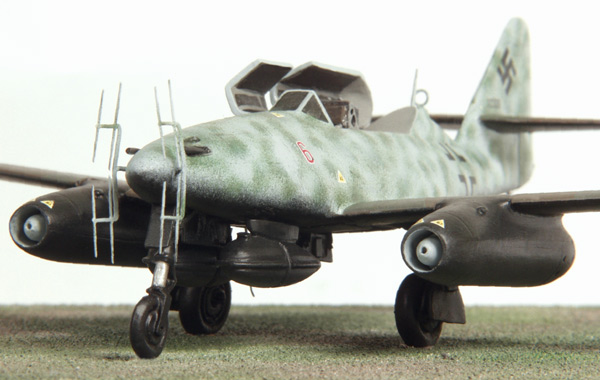Messerschmitt Me 262B-1a/U1
Messerschmitt Me 262B-1a/U1 Nightfighter Wk Nr 110306
10./NJG 11 Fw. Karl-Heinz Becher, Schleswig-Jagel, April 1945.
Generalleutnant Adolf Galland, who would later become more familiar and associated with the Messerschmitt Me 262, is reported to have said after his first flight in the aircraft that it was “like being pushed by an angel”.
The world’s first operational jet fighter, the Me.262 was first flown on jet power on 18 July 1942; its introduction to front-line service was early in 1944 with test and development unit Erprobungskommando 262. The build up of deliveries was fairly slow and its first kill, a Mosquito, was by Lt. Alfred Schreiber on 26 July 1944. Because the aircraft’s primary role was changed by order of Adolf Hitler to that of “Blitz Bomber” its use as an interceptor took longer to get established than it should have done, but by the turn of the year Jagdgeschwader 7 was taking its place in the daylight defence of the Reich with the jet. Over 1400 Messerschmitt Me 262s were built, but many of these were destroyed by bombing before they could be used by operational units.
Transition from piston-engined to jet-powered fighters proved more difficult than had been expected, and the first of fifteen Me 262B-1a two-seat conversion trainers was delivered in November 1944. To make room for the second seat some fuel capacity in the fuselage had to be sacrificed, and therefore a pair of 66 gallon fuel tanks were fitted to pylons beneath the nose. Following trials with radar fitted to a single-seater, it was decided to equip two-seaters still on the production line with FuG 218 Neptun V radars, with prominent “Stag’s Antlers” aerials on the nose which reduced the top speed by about 55 km/h. Seven of these night fighter variants, designated Me 262B-1a/U1, were used by 10/NJG.ll in April 1945 in the defence of Berlin, the only unit to be so equipped. At the end of hostilities these were handed over to the Allied forces and “Red 6” became one of “Watson’s Whizzers”, destined for the USA where it wore the identifier “FE-610”. Colonel Watson was particularly charged with acquiring German jets, and collected a small pool of Messerschmitt Me 262, some of which were passed to Britain and France. “Red 6” became T2-610 while the Me 262 was part of a “flying circus” of captured German aircraft; it disappeared in 1950 and is presumed to have been scrapped.

Scale 1:72 Wingspan 6.84″ (174 mm)
Base size 7.71″ (196 mm) square (No. 5)
Weight not including base 12 ozs (337 grams) Limited edition of 100 only




